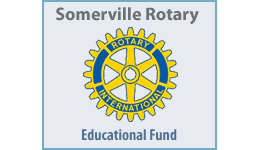10th Mountain Div. PAO
Editor’s note: This is the second of a two part series about Soldiers from the 2nd Brigade Combat Team, 10th Mountain Division, supporting the Iraqi National Guard. The first part featured Soldiers who advise the ING. The second part will feature the medics who support both the ING and CAG.
CAMP VICTORY, Baghdad – A day at Forward Operations Base Hawk, nicknamed the “Alamo,” is what movie goers expect to see from a combat film. Character-developing dialogue is cut short as Iraqi National Guardsmen and American Soldiers roll on and off the base ready for the next big mission. They even have a lovable pet, an Iraqi dog named “Clyde,” for comic relief.
The only constant at the Alamo is that medics from 210th Forward Support Battalion are ready to treat soldiers from the 303rd Iraqi National Guard Battalion and their American supporters in the Commando Advisor Group from the 2nd Brigade Combat team (Commandos), 10th Mountain Division. The medics would tell you the only constant at the Alamo is there are no constants.
“There is no such thing as a normal day over here,” said Sgt. Michael Schwartz, 210th FSB. “One day we’ll have seven patients, the next day we’ll have none.”
Just because they remain in the rear while ING and CAG Soldiers patrol the streets does not mean the medics don’t see their share of action. The Alamo provides plenty of excitement, but it is not for the faint of heart, said 1st Lt. Erica Fiola, a physician’s assistant with 210th FSB.
“We see it all out here,” she said. “We love doing what we do.”
“It’s more intense, more real,” said Pfc. Brian McCourt.
In their short tenure at the Alamo, 210th FSB medics have already treated mass casualties and called in several medical evacuations, mostly for ING soldiers. On Nov. 20, they woke up in the early morning to several seriously injured ING soldiers being brought in on stretchers.
The medics quickly reacted and called in a Medivac. Fiola didn’t even have time to put her boots on and helped carry the casualties to the helicopter in her slippers. Pfc. Jeremy Roberts said training, instincts and adrenaline got the medics through the ordeal and as a result many ING soldiers will live to see another day.
“We woke up early in the morning,” he said. “It was surreal, like it wasn’t even happening.”
Soldiers from 210th FSB also occasionally help Iraqis in the local community. On one occasion, Fiola and Soldiers from the CAG treated two children in the neighboring city of Ameriya. The brother and sister, refugees from Falljua, received shrapnel wounds when a mortar round intended for the Alamo hit Ameriya instead.
The children, unable to receive treatment at the city hospital because of the prohibitively expensive costs, were tended to by American soldiers. Fiola stitched the children and said they will make a full recovery.
Offering medical services helps not only Iraqis, but Coalition Forces eager to show they are earnest in their efforts to help Iraqis, she said.
“This is one way to win the hearts and minds of the Iraqi people,” she said. “It helps build trust between us. The family was very nice to me and very helpful. All and all it, was a good experience.”
In battle, when time is of the essence, treating an American Soldier can be difficult. Treating a patient who doesn’t speak the same language adds another layer of difficulty to the situation, Schwartz said.
“We can’t talk freely to them because of the language barrier,” he said. “They can’t tell us what is wrong, so we have to figure it out.”
All the medics from 210th FSB said their experiences at the Alamo have been worthwhile. They take pride in treating Americans and Iraqis alike
“There is nothing better than saving someone’s life,” said Pfc. Candon Boutin. “It doesn’t matter if they’re American, Australian or Iraqi. We’re all on the same side.”
















Reader Comments